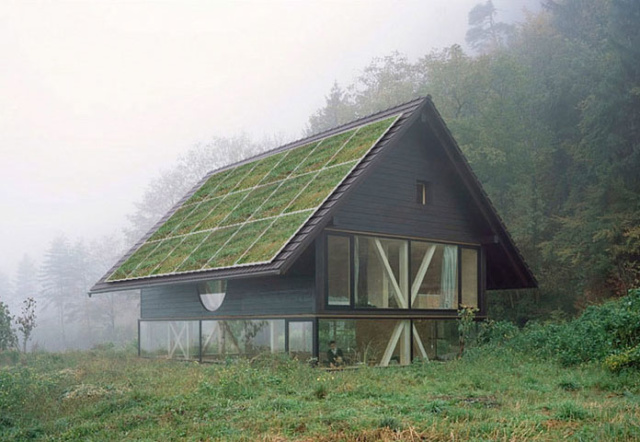
Let’s face it: no one has ever characterized a solar panel as being particularly attractive. In fact, they’re eyesores. While the environmental and business cases for photovoltaics are relatively easy to make, their aesthetic dimension has long been a losing proposition.
“In states like California, solar is half the price of the local utility, even without subsidies,” explained Ido Salama, co-founder of Sistine Solar. “At the same time, it feels like all solar products look the same: they come in either black or blue, and, while solar panels work great, many people would describe them as ugly. At the very least, they look out of place on a roof,” he added.
Rather than attempting to convince people to appreciate solar for what it is, Salama and company set out to build a solar panel that appeals to their sense of aesthetics instead. To that end, Sistine Solar introduced its SolarSkin technology—described on the company’s website as “solar with curb appeal”—in 2013 when its developers won the renewables track of the MIT Clean Energy Prize. Since launching SolarSkin, the company recently introduced its online Design Studio platform to allow anyone to design, customize, and price a solar installation.
How it works
Developed by MIT engineers, SolarSkin is a thin film specially coated with ultra-durable graphics and integrated onto high-efficiency solar panels. The technology employs selective light filtration to simultaneously display an image and transmit sunlight to the underlying solar cells with minimal loss in efficiency. The product is available in any number of colors and patterns, is compatible with every major panel manufacturer, and is available for both new and existing roofs. The end result is essentially a kind of camouflage for the typically drab photovoltaic panel.
Sistine Solar’s new SolarSkin Design Studio is an online tool that allows architects, designers, and homeowners alike to design and order a customized solar system from a desktop computer or mobile phone. With a $99 refundable deposit, end users will receive a preliminary system design using LIDAR mapping, a detailed panel layout, guaranteed production figures, a realistic rendering, (where suitable image is available), and guaranteed delivery within 90 days.
The Design Studio is intended to get customers more excited about solar, according to Salama. “Homeowners appreciate the transparency, customizability, and especially the ability to match their solar panels to their roof,” he said. “Architects and designers love it because for the first time, they have a product that allows them to showcase solar in a way never before possible—integrated, congruent, harmonious.”

In spite of the improvement to aesthetics, however, solar technology still faces a number of challenges in terms of market transformation. “Soft costs is one barrier,” he said. “Solar is so complex because every municipality has different rules when it comes to permitting solar.” Noting that it may take one to three days to physically install and wire up a solar system, Salama points out that it can take up to three months to get a permit. “If soft costs could be reduced—like streamlining the permitting process—we would see a radical transformation in adoption,” he suggested.
Of course, affordable storage is an ongoing issue with solar technology. “When solar and storage become more economical than buying from the local utility, we will see a huge shift towards distributed generation and plenty of homeowners cutting the cord,” Salama predicted.
Now that solar panels are eligible for a makeover, however, there’s one less hurdle to overcome—making the future of solar technology a little more attractive.
